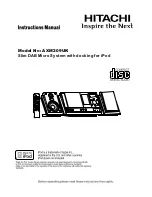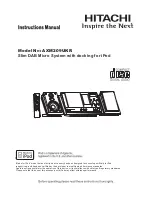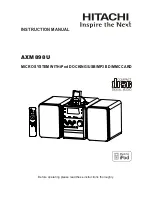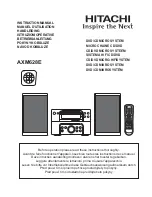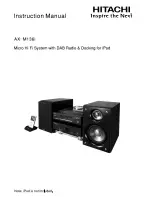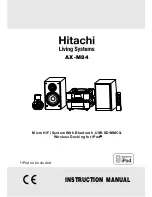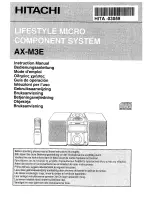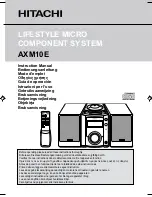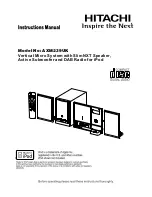
40 APOLLO
Digital Broadcast Production Console
Connection Information
FIBRE SFP CONNECTIVITY
Optical SFP modules for fibre
connectivity can be used for console
to processing core, router to router,
and router to I/O connections.
Fibre connectivity is required when the
cable run between units exceeds the
maximum permissible length for Cat5e/
Cat6 copper cabling. Fibre can also be
used for shorter runs if it is simply the
preferred medium.
Note that this section only concerns fibre
connections made via SFPs. Like all I/O
boxes, MADI units have pluggable SFPs
for their Hydra2 connections to routers,
but they also have fibre connectors that
pass the actual MADI audio format in and
out of the system. The MADI I/O format
fibre connectors are of a fixed type which
has no relation to SFP choice. Different
build types of MADI I/O box are available
to provide various types of MADI fibre
interface. Please refer to the Hydra2
installation manual for more details on
MADI I/O options.
Singlemodevsmultimode
The core within multimode fibre is
relatively thick when compared to
singlemode. Light travels through
multimode fibre at multiple angles,
'bouncing' of the sides of the core as it
travels through it, taking multiple paths,
or 'modes' of varying length from one
end to the other, resulting in pulses being
lengthened as they travel. Singlemode
fibre has a very fine core and light travels
in a single, direct path from one end to
the other without affecting pulse length.
The result is that singlemode fibre
has a higher bandwidth capacity and
importantly, low signal loss allowing much
greater distances to be achieved. Light
can be transmitted into multimode fibre
using LED’s or low powered lasers whilst
singlemode requires a higher powered
laser.
Calrec recommend the use of singlemode
fibre whenever possible in order to
maximise the flexibility in the location of
hardware and maintain uniformity across
the system by using a single type. If a
multimode infrastructure is in place, fibre
length, the number of inter-connects
and equipment location become more
important.
SFP modules are available for both
singlemode and multimode fibre types.
It is important to select the correct
SFP for the type of fibre being used in
the installation. If using a mixture of
singlemode and multimode fibre, it is
important to ensure the correct SFPs are
matched to the correct fibre type.
Identification
The release button / handles of fibre
SFPs are colour coded - Blue for
singlemode, Black for multimode. Blue
LC connectors, as shown below should be
used to terminate singlemode fibre, and
beige coloured ones for multimode.
DUPLEX LC FIBRES CORRECTLY TERMINATED A TO B & B TO A
Connectors/terminations
All Calrec fibre SFPs, multimode and
singlemode use duplex LC connectors.
The duplex termination requires two fibres
per connection, one is a send path, the
other is a receive path. When terminating
the fibre, the send from one end should
connect to the receive of the other and
therefore they are 'cross-over', terminated
A to B and B to A.
SFP/fibrespecifications
Specifications are shown in the table
below. The maximum distances shown
assume a single point to point connection
with no intermediary interconnections.
Losses should be measured across the
total signal path including interconnects -
between points of transceiver connection.
Losses need to be less than the optical
power budget of the SFP transceivers
being used.
Type of Cable
Maximum
Distance
Connector
GBIC Type
Optical Power
Budget
Copper Cat 5e/6 Ethernet
90m
RJ45
N/A
N/A
Fiber 62.5/125µm Multimode
275m
SX
7.5dB
Fiber 50/125µm Multimode
550m
SX
7.5dB
Fiber 8/125µm Singlemode
10km
LC Duplex
LX
8dB
Fiber 8/125µm Singlemode
70km
LC Duplex
LH
23dB
Note.
If connection redundancy is required, two duplex fiber cable runs will be needed per connection.
LC Duplex
LC Duplex
SFP COPPER / FIBRE SPECIFICATIONS
Summary of Contents for Apollo
Page 5: ...calrec com Putting Sound in the Picture APOLLO INFORMATION...
Page 9: ...calrec com Putting Sound in the Picture APOLLO CONTROL SURFACE...
Page 29: ...calrec com Putting Sound in the Picture APOLLO PROCESSING CORE...
Page 35: ...calrec com Putting Sound in the Picture APOLLO CONNECTION INFORMATION...
Page 59: ...calrec com Putting Sound in the Picture APOLLO EXTERNAL CONTROL...
Page 72: ...72 APOLLO Digital Broadcast Production Console 72 APOLLO Digital Broadcast Production Console...
Page 73: ...calrec com Putting Sound in the Picture APOLLO SETUP AND CONFIGURATION...
Page 93: ...calrec com Putting Sound in the Picture APOLLO PANEL OPTIONS...
Page 115: ...calrec com Putting Sound in the Picture APOLLO SPECIFICATIONS...







































